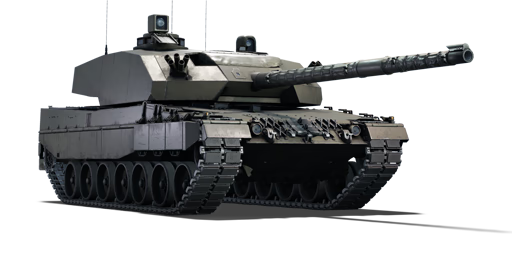



The Vickers Mk.7 is a British medium tank. It was introduced in Update 1.93 "Shark Attack".
The Vickers Mk.7 is a prototype tank design by Vickers during the 1980s. The tank featured a capable fire control system, an effective and tested L11 120 mm gun, similar to those on the Chieftains and as a novelty for the British tech tree, the turret is mounted on the chassis of a Leopard 2.
This very raw input in mobility from the Leopard's engine, matched with the sturdy Chobham armour inside the Vickers turret, grants the veteran tankers of the British tree a fairly unique and dynamic balance of mobility, firepower and armour for a variety of playstyle options.
The tank is not only well balanced in the 3 main categories, but is also armed with improved TOGS, laser rangefinders and various smoke discharging equipment; turning this MBT into a dangerous opponent to meet on the battlefield.
| Ammunition | Type | Armor penetration (mm) at a distance: | |||||
|---|---|---|---|---|---|---|---|
| 10 m | 100 m | 500 m | 1000 m | 1500 m | 2000 m | ||
| APFSDS | 397 | 395 | 388 | 379 | 370 | 361 | |
| HESH | 152 | 152 | 152 | 152 | 152 | 152 | |
| Smoke | 5 | 5 | 5 | 5 | 5 | 5 | |
| APFSDS | 471 | 470 | 465 | 458 | 451 | 443 | |
| Belt | Belt filling | Armor penetration (mm) at a distance: | |||||
|---|---|---|---|---|---|---|---|
| 10 m | 100 m | 500 m | 1000 m | 1500 m | 2000 m | ||
| AP/AP/T | 13 | 12 | 7 | 3 | 2 | 0 | |












Mobility | |
|---|---|
Protection |
|---|
Firepower | ||
|---|---|---|